Who knew? Stokowski was the first to put winds first
NewsWe reported yesterday that Ivan Fischer rejigged his orchestra to put the winds up front beside the soloist in Stravinsky’s violin concerto.
Professor Per Hannevold, principal bassoon of the Bergen Philharmonic, has sent us this picture from Philadelphia in the early 1930s, showing that Leopold Stokowski thought of it first.

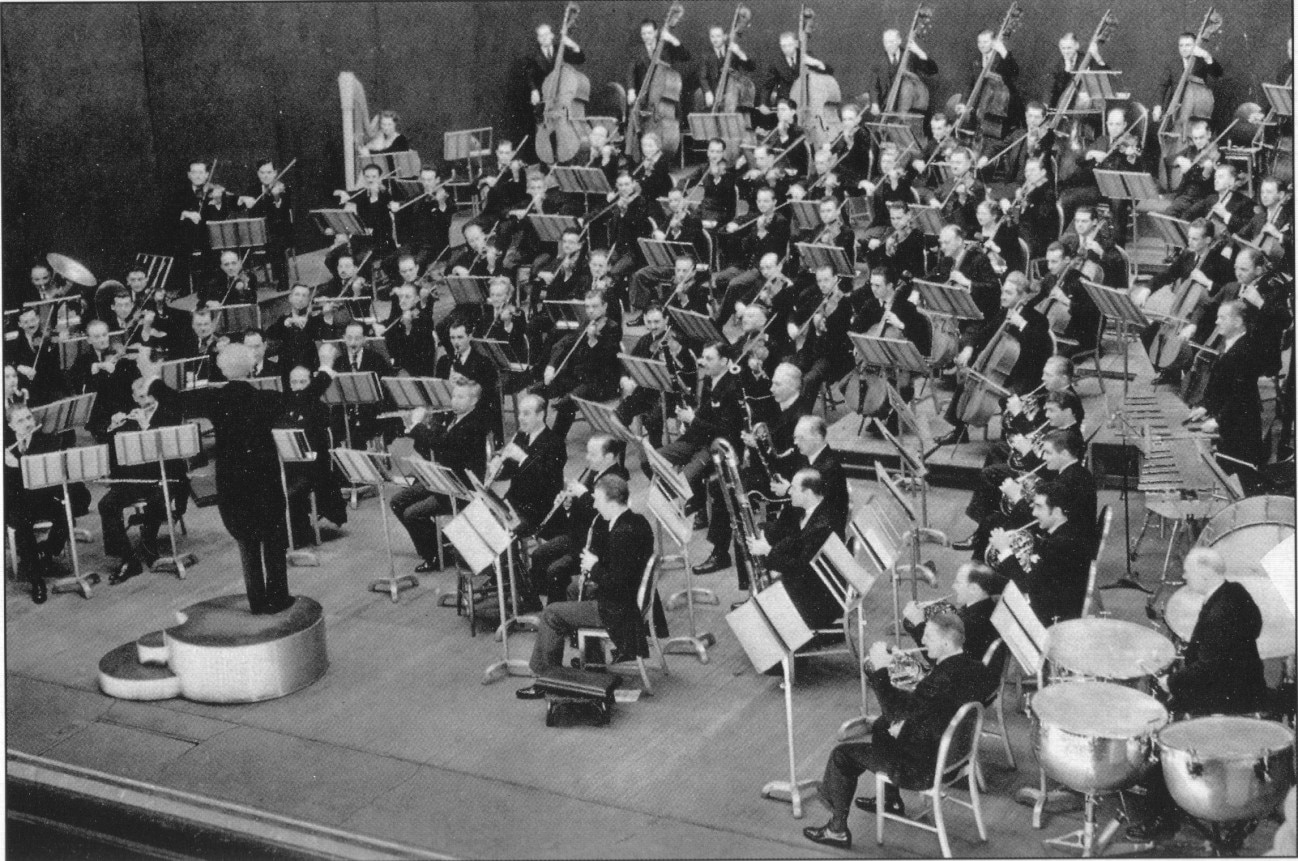
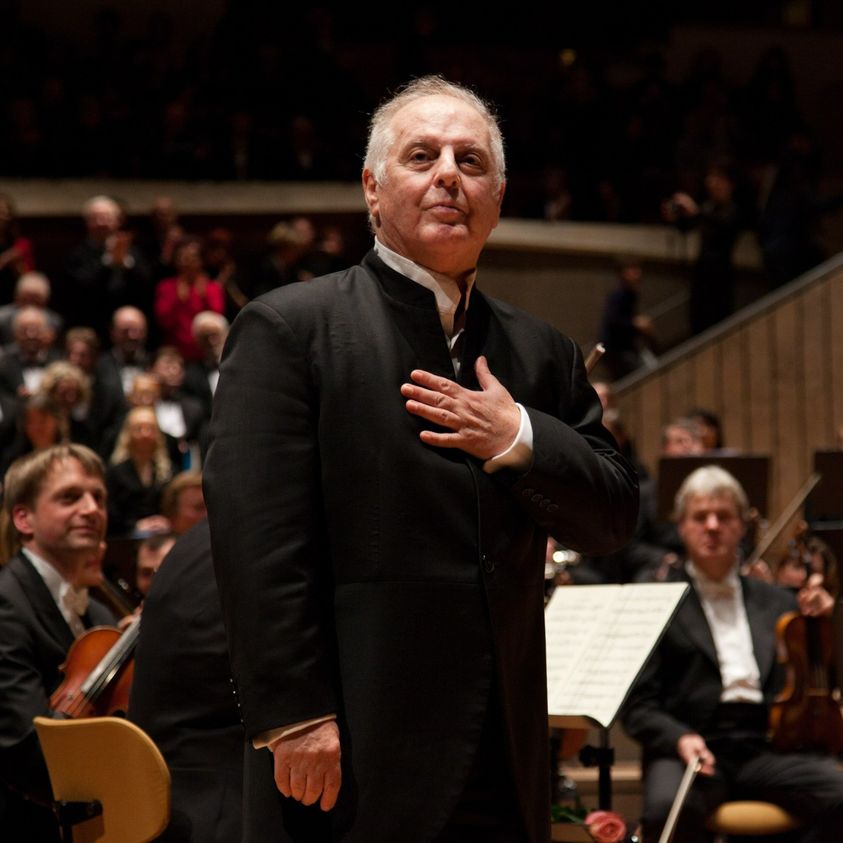
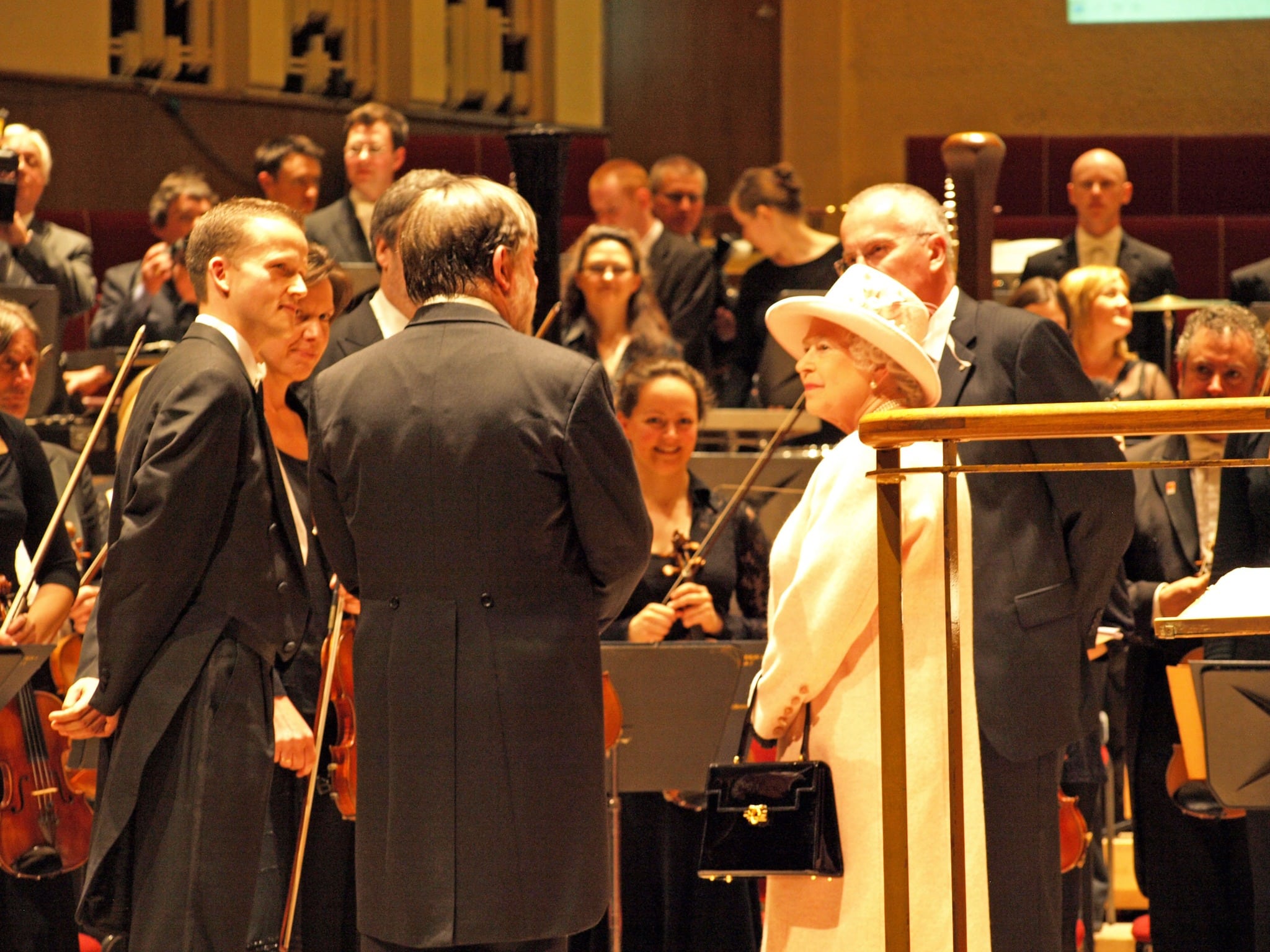
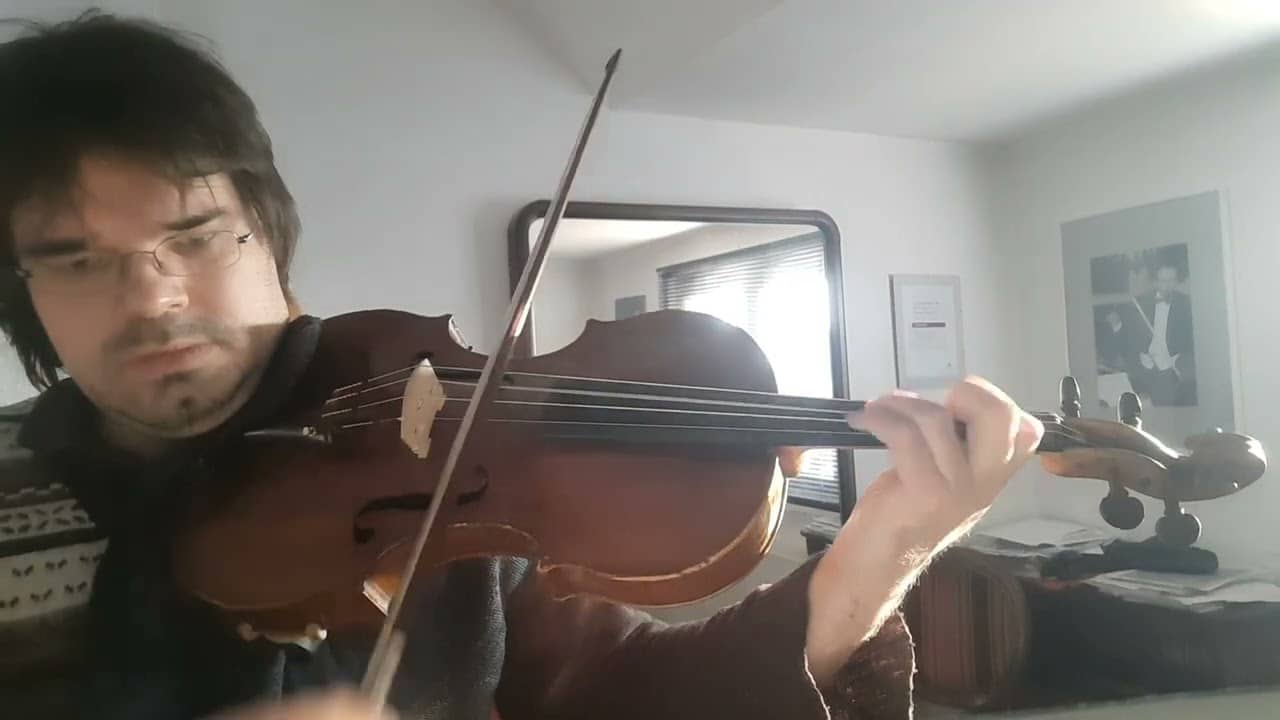
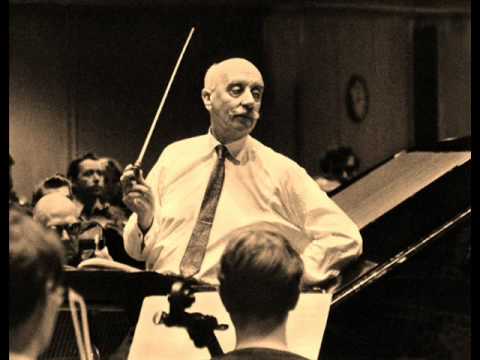
I’ve seen Rattle do this in Mozart piano concertos.
Gardiner does it with Bach and other baroque music — not a clue if that’s personal preference or reflects how musicians were seated at the time.
It could be to do with the balance and the sound to be achieved
Very well known fact….He experimented quite often with various seating orders.
Hardly. Already Bach did it. Stokowski experimented a lot.
What a shame the Americans ended up pushing the Celli to the right side and the violins amassed together on left side, instead of distributing their sound best over the whole width of the stage.
Efficiency over beauty. America brought us a lot of that.
Nonsense.
Antiphonal 1st and 2nd violins is so important in so much music. Including late Romantic, it’s what they wrote for. Take a look at the beginning of the last mvt of Tchaikovsky 6th.
That’s a gross oversimplification. There are orchestras out there that split the violins. And don’t forget that practically every orchestra that put the cellos to the right were run by European music directors. Ask string players: they prefer all violins being together, especially when it comes to things like the Shostakovich 5th with three violin parts. There is no perfect seating arrangement and the size and properties of the auditorium have a big role to play.
And let’s not forget the stunning accompaniment section Sibelius gives us in “Tapiola” – beginning in measure 103. The effect would be significantly reduced with divided violins.
To the contrary. The effect is intended and works only when the violins are divided left and right. Read the score again and think…
Fact is, pretty much all symphonic music since the early classical period until very roughly about 1920 was written for 2nd violins on the right side and celli in the middle, facing the audience. In some compositions it is even used for antiphonal effects.
Celli project best that way. Voices next to each other in musical context (violins 1&2) are psychoacoustically easier to follow, if coming from different angles.
That violinists – in some works more than in others – find it beneficial for tight ensemble coordination, to sit next to the 1st violins, is understandable, but rarely of the highest priority compared to creating a rich and transparent sound for the audience.
The problem these days is emphasized by most (there are exceptions) conductors, who at their position, where the celli face them either way, and where they can’t judge sound projection further back in the hall.
I have the suspicion, the American seating is due to “time is money” rehearsal efficiency thinking. Add to that the mono recordings at the time when that seating evolved, where lateral angle of incidence to the audience doesn’t matter, and you get such a less than artistically optimal seating.
According to Georg Tintner, it was Henry Wood (of the Prom concerts) who first put the violins all on the left – it’s easier for the conductor that way.
During my 5 years as Stokowski’s Associate Conductor at Carnegie Hall, with the American Symphony Orchestra, he
never stopped experimenting with orchestra seating in his
quest to obtain the best balance between brass, percussion,
strings. For my own concerts I reverted to the international
seating arrangements, the only exception of it being some
parts of Europe having violas on the right, in place of cellos.
I find that while this insures the violas are heard, it obscures
the cello line, which also needs to be somewhat near the basses, especially in classical works where they play the same notes. After my Carnegie concerts, Stokowski seated in his box, he would call me and chat about orchestra seating, but he never tried to influence me, nor did he make any comments about my use of a baton, but I knew he hated the concept of a
wooden stick, “inexpressive” in his words.
José Serebrier
Wonderful memories Maestro. I have enjoyed many of your super recordings with the Bournemouth Orchestra and others, including the Stoki transcriptions!!
Lionel Tertis in his autobiography writes about his ideas on orchestra seating. Not surprisingly one goal was greater emphasis on the violas. In most orchestras (and string quartet seating) the tilt of the viola is away from the audience. There is an amusing video of a string quartet playing the “American” quartet and the violist abruptly shifts in his chair during his big solo moment towards the end of the fourth movement. It makes a surprising difference.
Maestro! Never forget your performances in Miami! ♥
He persisted in this seating with the American Symphony Orchestra in New York in the 1960s as well.
Louis Krasner said when he played the Berg Violin Concerto with Mr. Stokowski he practiced thinking about where all the sounds would come from. When he arrived to rehearse, he was unnerved to discover that Mr. Stokowski had rearranged the orchestra like that. Big surprise, and big adjustment!
Especially for the passage following the ww chorale, where the solo violin is instructed to physically lead the strings!
(Caused a commotion when I did that Phila…)
Stokowski generally favored strings on his left and winds on his right (as shown in the photo) and basses ranged across the back, high up to project their sound toward the audience. He made numerous variations to this pattern depending on the auditorium. For recordings, he would revert to “traditional” seating because it’s what customers were used to and balances could be adjusted at the mixing desk. Recently I attended Tosca at the Met where YNS rearranged the Met orchestra in what I would call Stoki’s usual pattern, all strings on the left and winds on the right. Typically at the Met the orchestra has strings split firsts and celli/basses on the conductor’s left and seconds/violas on his right and woodwinds in the center, brasses on the right. The new seating was revelatory and Puccini’s orchestration was revealed in what I can only liken to a restored Sistine Chapel compared to pre-restoration. This impression was from my seat upstairs in the front row of the Balcony. The singing was superb but the orchestra – just amazing. I hope he does this more often. I know YNS is a bit of a Stoki fan (along with the likes of Carlos Kleiber) but I don’t know if he was thinking of Stokowski when he made this very effective change to seating.
Barenboim did that there for “Tristan” (of all things), too.
strings on left, winds on right is not just a Stoki innovation, it’s an old textbook Opera seating plan that was traditional in smaller theaters in Europe.
I saw this winds in front configuration when he returned to Cincinnati in early 1960’s.
It’s breaking winds in another sense.
Interesting. As a wind player I’ve done this for several conductors and it was always very effective. Jesus Lopez Cobos brought us winds up front for Haydn 6, Le Matin. It made a lot of sense. We were like symphony concertante soloists. It made me wonder why more conductors don’t do this.
Reinhard Goebel, a superb conductor & early music authority, brought us front for a Mozart piano concerto, sitting in the outside position where celli usually are. He gave us a brief historical background and explained that this was Mozart’s original seating plan.
Fascinating to know that Stokowski did this, too!
Stokowski constantly rearranged the orchestra according to individual works being played. He was conscious not only of how each instrument’s sound projected, but the way the members of each section, and the ensemble as a whole, would blend. He was responsible for the first and second violins being seated next to each other and not across from each other so that they could hear each other. Before the first rehearsals of concerts, he would often draw diagrams of the seatings to give to the stage manager, and there were often as many different seatings as there were works on the program. He’d also adjust the seating to the acoustical characteristics of individual halls. I was Stokowski’s orchestra librarian and close friend, and observed these techniques for 15 years. His attention to sound production extended also to sound reproduction, and his experiments were responsible in large part for the quality of recorded sound today. I’ve just completed a book about my experiences with him and other great musicians.
When will your book be published? I look forward to reading it.
Me too
Fascinating! Thank you for this information.
Nancy, Please give us some information on your new book on working with Stokowski and other maestros (Ormandy, etc.). Should be a fascinating read.
I am recalling someone telling me about a Stokowski concert he attended that had some me brass players in the front row for some reason. Everybody got to see what a spit valve is for! Visuals aside, it sounded wonderful.
You didn’t know that?
It was in Harold Schonberg’s book on the great conductors.
Stokowski had his woodwinds on the right. I saw him regularly do this with the American SO in the early 70s.
It’s fascinating to hear from those who worked with Stokowski; many thanks for your contributions. I remember reading an excellent biography by someone whose name I shamefully cannot recall, but Leo’s many experiments and ideas about seating were well documented. He also talked a lot about ‘Bogenfrei’ which does not mean what he wanted it to convey – that of each individual string player bowing as he or she wished – but actually ‘without a bow’. That linguistic slip exposed one of the canards about him growing up in Mecklenburg-Vorpommern…
I’d love to read the bio again, but can’t find it.
Oliver Daniel’s authoritative biography is the one you want. Usually on Ebay. Stokowski spoke excellent German since he and his first wife spent every summer in Munich prior to WW1. Free bowing was a key component of the “Stokowski Sound”. Manoug Parikian told me that when he came to the Philharmonia in 1951 within a few minutes “it sounded like we were all playing Strads”.
I don’t doubt he spoke excellent German, but a native speaker – as Stokowski sometimes liked to imply about himself – would never have made that mistake. Thanks for the tip about Oliver Daniel; I think that as the one I read. The page count certainly fits.
But did he speak that excellent German with, or without, the generic “StokyForeign” accent for which his English was famous?
(previously posted) In 1970, Stokowski conducted the Juilliard Orchestra with that setup in Capriccio Espagnol. I was on first stand viola in front of the podium, between the solo violin and clarinet. I smiled at the stereo effect as they traded solos. Stokowski stopped the orchestra and pointed his long finger down at me. “You there, why are you smiling?” The orchestra became silent, knowing that he was known for kicking players out of rehearsal. Taking a moment to think and swallow, I responded “It sounded so good, maestro, I was happy.” He briefly stared and then said “Orchestra, letter B.”
This was not typical of Stokowski’s positioning of the orchestra; for example, he usually had the harps downstage of the strings. But he experimented quite a bit to get the best sound, and would certainly change it to suit the piece. The acoustics of the Academy of Music are very soft, geared toward opera, with little reverberation, which makes it quite ideal for serious listening, as you can hear every detail, and the brass and percussion are unable to drown out the rest of the orchestra.
All Stokowski concerts in the early 70’s with LSO in festival hall had all the winds to the right.
Somewhat later, in the 50s as a child, I never forget attending rehearsal and concert of Barbirolli in London when he put the woodwind section in the front to his right for Mozart’s Piano Concerto in C minor, K491. It was magical and I think of it every time I hear that concerto!
I heard, live, Fischer do that in Berlin. Sheer pedantry: the most inconsistent Schuberts Great C Major I have ever experienced…
Stokowski’s seating experiments were largely inspired first by his vast recordings activities. At the time those were mostly mono and one-microphone recordings. Later also stereo, but very few microphones. Balancing the orchestra had to happen mostly on stage rather than in the mixing desk. He was known to be very involved with the recording producers to achieve a good balance. He then took this idea also to the concert hall.
Phase 4 stereo (which comprised at least 20 LPs of his recorded 1964 to 72) used a gazillion microphones and a 20 channel mixer!!!! The balancing was mostly NOT done on stage!
Maybe, but that was long after his experiments were done, long after his formative years around those seating arrangement ideas.
Stokowski was interested in the Phase 4 experiment, but he could hardly have been pleased with the often badly balanced and “in the face” sound results.
Also, having a 20 channel mixer does not imply, that all 20 were always used. It’s only the maximum possible.
No news here. Orchestras do this from time to time. Here in Lyon, depending on repertoire, it can be beneficial in our acoustics in terms of balance and for musicians to hear each other better. We tried it for a Schubert C-major and more recently for Mozart Piano concertos with great results. Fischer has a very fine ear and dares to follow it.
Another piece that would greatly benefit from such treatment is Shostakovich’s First Cello Concerto. (Having played the Horn obbligato in that work at quite a distance from the soloist, I believe I can venture an opinion here.) I would like to add that Sir Roger Norrington achieved splendid results having the winds stand in a semi-circle around the strings in Beethoven’s Eroica. May I suggest that many orchestral works of the classical and early romantic periods would gain in transparency and wealth of detail if only the strings and winds were respectively divided to the left and right of the conductor (if one is needed at all). I am well aware of the antiphonal treatment of the violins described elsewhere but it is no less true that the wind writing, in -for example- all of Beethoven’s symphonies (except for the 9th) follows the practice of the “Harmonie music” or wind band treatment that was popular in Vienna at the time and which achieved sublime perfection in Mozart’s Gran Partita. Some years ago, I tried Beethoven’s 8th symphony with such a layout. The results were EXTREMELY rewarding. I am aware of Sir John Eliot Gardiner’s approach to have the Schumann symphonies performed with the orchestra standing (unfortunately, I only have second-hand knowledge of that.) I have also seen Maestro Barenboim perform Mozart with his back to the audience as he conducts from the keyboard. (The piano is placed in the midst of the orchestra, and the winds literally play chamber music with him. The artistic results in that instance were beyond words.) So, what’s my point then? The music, most of the time, will tell you what needs to be done, historically informed practice or not. Only open minds are needed, but Mr. Lebrecht has sardonically alluded to the “little ayatollahs” of this and other related issues. Aware I should tread carefully in such environs I now quietly walk away…
It was reported by the late Gilbert Kaplan that Mahler instructed the brass instrument choir be relocated for the “Urlicht” movement of his Second Symphony. It has proven logistically impossible to achieve that in concert, to the best of my knowledge. Mr. Kaplan also remarked that Mahler’s injunction seemed to inhabit the realm of the unpractical. Has that been filmed for any of the video performances available? Has any orchestra/conductor attempted to do that in front of a live audience? If so, how was it accomplished?
This was known as Stkoi’s “upside down” orchestra.
He had a theory that all the violins should be on the same side of the stage with their instrument’s sound holes pointing towards the audience for maximum volume capability.
I believe this picture is from 1940; this seating arrangement was nicknamed “the upsidedown orchestra.”